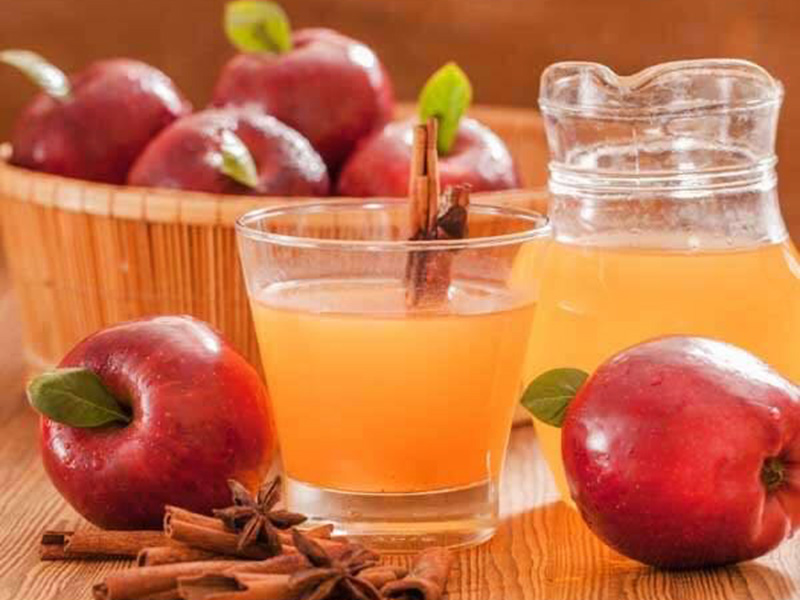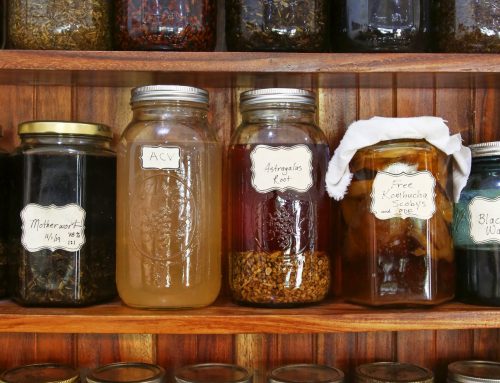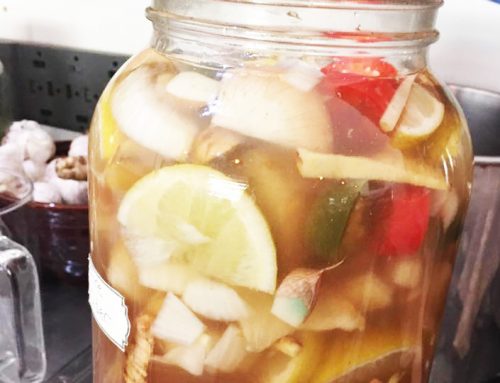Step by step instructions on how to make apple cider vinegar that is raw, enzyme and probiotic rich for all your detoxification, cooking, and medicinal needs.
Recipe makes 1 gallon
Ingredients:
- 5 large apples or scraps of 10 apples, preferably organic
- filtered water
- 1 cup raw honey preferably local and organic
Instructions:
Before you can make your raw apple cider vinegar, you must first make hard apple cider. The alcohol in the hard cider is what transforms via fermentation into acetic acid, which is the beneficial organic compound that gives apple cider vinegar its sour taste. Nature is amazing!
- Wash the apples and coarsely chop into pieces no smaller than 1 inch. Cores, stems and seeds may be included.
- Put the chopped apples into a 1-gallon clean, wide mouth, glass jar. Please do not brew your apple cider vinegar in stainless steel pots, as the acidic vinegar will causing leaching of heavy metals such as carcinogenic nickel.
- The chopped apples should at least fill half the container and maybe a bit more. If at least half the container is not filled, add additional apple scraps until you achieve this level as a minimum.
- Pour in room temperature filtered water until the chopped apples are completely covered and the container is just about full leaving a couple of inches at the top.
- Stir in the raw honey or cane sugar until fully dissolved.
- Cover the top of the glass jar with cheesecloth, a thin white dishtowel or flour sack cloth and secure with a large rubber band.
- Leave on the counter for about 1-2 weeks, gently mixing once or twice a day. Bubbles will begin to form as the sugar ferments into alcohol. You will smell this happening.
- When the apple scraps no longer float and sink to the bottom of the jar after approximately one week, the hard apple cider is ready. If for some reason, the apple pieces still do not sink to the bottom after 2 weeks but the mixture smells alcoholic, proceed to the next step anyway.
- Strain out the apple scraps and pour the hard apple cider into a fresh 1-gallon glass jar or smaller sized mason jars of your choosing.
- Cover with a fresh piece of cheesecloth and secure with a rubber band or string.
- Leave on the counter in an out of the way spot for an additional 3-4 weeks to allow the alcohol to transform into acetic acid by the action of acetic acid bacteria (these are the good guys!). A small amount of sediment on the bottom is normal. In addition, a mother culture will form on top, similar to what happens with kombucha.
- Taste your raw apple cider vinegar to determine if it is ready starting after 3 weeks. If it has the right level of vinegar taste for you, strain it one more time and store in clean, glass mason jars or jugs. After 4 weeks, if the taste still isn’t quite strong enough, leave it for another week and try again. If you accidentally leave it too long and the taste is too strong, just strain and dilute with some water to a level of acidity that pleases you.
- Use as desired and store in the pantry out of direct sunlight.
Recipe Notes:
- Cane sugar may be substituted for raw honey if desired. Using raw honey will result in the healthiest apple cider vinegar, however.
- Raw apple cider vinegar doesn’t go bad, but if you leave it for a long time, another mother culture will likely form on top. This is fine, just strain it again if desired and dilute with a bit of water if the taste has become too strong.
Share with your friends and family!



